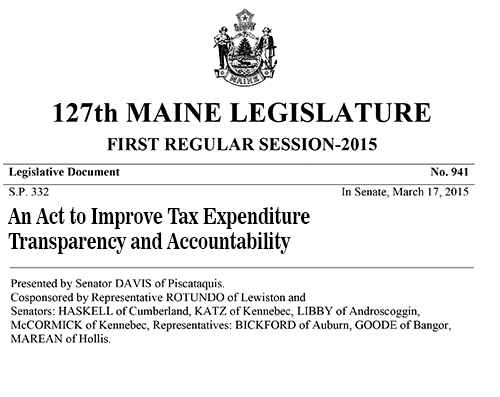When the company that owned the Great Northern Paper mill filed for bankruptcy last year, it was more than a story about the decline of a traditional industry and the loss of hundreds of jobs.
Cate Street Capital, a New Hampshire-based private firm, had acquired the mill for $1 in 2011 and had been able to operate it by taking advantage of a number of government programs designed to create and preserve jobs. Most notably, the mill had taken advantage of fully refundable state tax credits that were used to leverage investment in plant improvements, but the improvements were never made. Financiers used the perfectly legal maneuver of taking a one-day loan that made it look as if they were investing $40 million. That put state taxpayers on the hook for $16 million.
The mill was shuttered in 2014. The only thing that survives today is the public liability.
BILLIONS OF DOLLARS AT RISK
Reporter Whit Richardson spent five months putting the story together, and what he uncovered should change the way the state uses tax credits to promise economic development. But it would be a mistake to think the problems exist in only one program. At risk is not $16 million but billions in tax incentive programs, which do everything from build affordable housing to preserve open space.
Are they worth the money? Sometimes they are, and sometimes they aren’t.
Even the New Markets Tax Credit program that was used in the Great Northern mill has been the vehicle to a number of successful deals that have saved jobs in economically challenged parts of the state. Some defend even the one-day loans, which can free up capital by paying off high-cost debt.
There is no way to give these programs a blanket thumbs up or thumbs down, but they all should receive a level of scrutiny that they are not getting now. Questions should be answered about whether the programs do what they are supposed to and if the benefits are going to the right people. A bill before the Legislature, L.D. 941, would do just that.
REVIEW OF TAX EXPENDITURES
The bill would task the Office of Program Evaluation and Government Accountability with a systematic review of about 200 tax expenditures, which are not part of the regular budget process.
These programs are typically sold to lawmakers as a tax break for a development that would not otherwise exist. The logic goes that small slice of something is better for the state than getting all of nothing.
But these programs can be very complex, and it’s not always clear whether the state is getting what it pays for. With the benefit of hindsight, the state would have been much better off investing $16 million directly in the Katahdin region instead of participating in a failed investment scheme to modernize the Great Northern mill.
In many cases, tax expenditures are used to get a private business to carry out a government function, but that kind of expenditure does not get the same amount of scrutiny that goes to services delivered by state employees.
Lawmakers from both parties were asleep at the switch when the Great Northern tax incentives were approved. They ought not put themselves in that position again. L.D. 941 is a good place to start.
Copy the Story LinkSend questions/comments to the editors.



Success. Please wait for the page to reload. If the page does not reload within 5 seconds, please refresh the page.
Enter your email and password to access comments.
Hi, to comment on stories you must . This profile is in addition to your subscription and website login.
Already have a commenting profile? .
Invalid username/password.
Please check your email to confirm and complete your registration.
Only subscribers are eligible to post comments. Please subscribe or login first for digital access. Here’s why.
Use the form below to reset your password. When you've submitted your account email, we will send an email with a reset code.